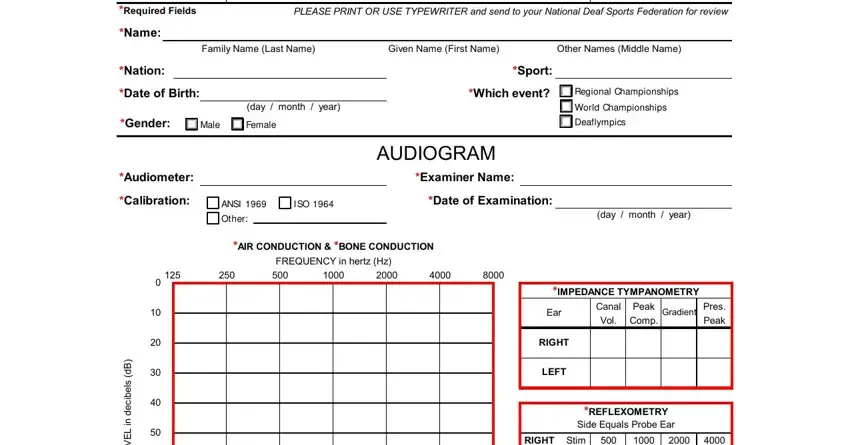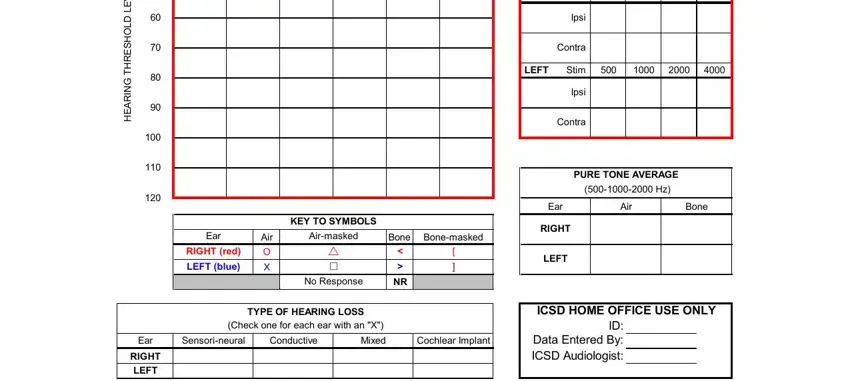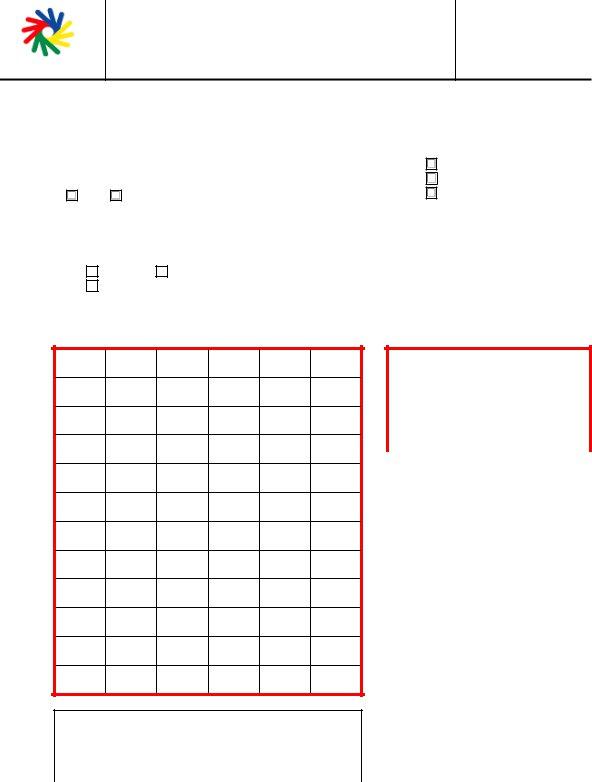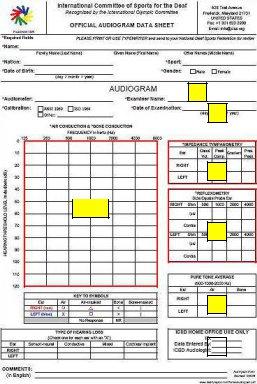Working with PDF files online is always very easy with our PDF editor. You can fill out official audiogram use online here painlessly. To maintain our tool on the forefront of practicality, we aim to adopt user-driven features and enhancements on a regular basis. We're at all times looking for feedback - join us in remolding PDF editing. This is what you'd want to do to start:
Step 1: Open the PDF doc inside our editor by clicking the "Get Form Button" above on this webpage.
Step 2: With this advanced PDF file editor, you'll be able to do more than simply complete blank fields. Express yourself and make your forms appear professional with customized textual content incorporated, or fine-tune the file's original input to perfection - all accompanied by the capability to insert your own graphics and sign the PDF off.
This PDF form will need some specific information; in order to ensure accuracy, please make sure to heed the suggestions hereunder:
1. It is advisable to fill out the official audiogram use online accurately, thus be mindful when filling out the areas comprising all these blanks:

2. When this array of fields is done, it's time to add the essential specifics in RIGHT Stim, Ipsi, Contra, LEFT, Stim, Ipsi, Contra, PURE TONE AVERAGE, Hz, Ear, Air, Bone, L E V E L D L O H S E R H T G N R, Ear, and RIGHT red so that you can proceed to the next part.

3. Completing COMMENTS In English, Audiogram Form Revised , wwwdeaflympicscomformsaudiogrampdf, and This field is required and is essential for the next step, make sure to fill them out in their entirety. Don't miss any details!

Regarding This field is required and and Audiogram Form Revised , make sure you get them right in this section. These could be the key fields in this PDF.
Step 3: Just after proofreading the fields, press "Done" and you're done and dusted! Go for a 7-day free trial subscription with us and obtain instant access to official audiogram use online - readily available in your FormsPal account page. FormsPal is focused on the personal privacy of all our users; we always make sure that all personal information processed by our system is kept secure.



